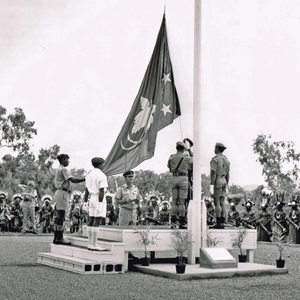About PNG: Housing
Housing in Papua New Guinea (PNG) is diverse and reflects the country's cultural, geographical, and economic variations. The nation's housing landscape encompasses a range of traditional and modern structures, influenced by factors such as local customs, climate, and available resources.
In rural areas, traditional housing is often constructed using locally sourced materials such as bamboo, thatch, and timber. These structures are well-adapted to the local climate, providing natural ventilation and insulation. Traditional village houses are typically raised on stilts, offering protection against flooding in regions prone to heavy rainfall.
Urban centers, such as the capital city Port Moresby, feature a mix of traditional and modern housing. The urbanization trend has led to the construction of more Western-style homes and apartment complexes, particularly in response to population growth and rural-to-urban migration. However, urban areas also face challenges related to informal settlements and squatter communities, where housing conditions may be substandard, lacking proper infrastructure and services.
The construction of houses in PNG is influenced by the country's seismic activity. Earthquake-resistant designs are important, especially in regions susceptible to tectonic movements. Additionally, cyclone-prone coastal areas may see the use of materials and designs that withstand extreme weather conditions.
Government initiatives and international collaborations aim to improve housing conditions in Papua New Guinea. Programs addressing housing shortages, particularly in urban areas, have been implemented to enhance accessibility to secure and affordable housing. The challenge of providing adequate housing is often linked to broader issues such as infrastructure development, land tenure, and socioeconomic disparities.
Land tenure systems in Papua New Guinea can impact housing, with customary land ownership being a predominant feature. In rural areas, traditional land tenure models may influence the location and design of houses, often passed down through generations. In urban centers, efforts are made to balance customary land practices with the need for planned urban development.
Affordability is a significant consideration in the housing sector. High construction costs, limited access to mortgage financing, and disparities in income levels can contribute to challenges in securing affordable housing. Government policies and financial institutions are working to address these issues, promoting more inclusive housing opportunities.
Sustainability and eco-friendly housing practices are gaining attention in Papua New Guinea. Traditional building methods often align with ecological principles, using locally sourced, renewable materials. As the country grapples with environmental challenges, there is growing interest in incorporating sustainable practices into modern construction methods.
Cultural considerations also play a role in housing design and construction. The diversity of ethnic groups in Papua New Guinea means that housing styles can vary significantly between regions. Local customs, social structures, and community traditions may influence architectural choices and construction methods.
Challenges related to housing in Papua New Guinea, including those tied to infrastructure, affordability, and urbanization, underscore the need for holistic approaches that consider cultural, environmental, and economic factors.
Ongoing efforts by government agencies, NGOs, and the private sector aim to address these challenges and improve housing conditions for the diverse population of Papua New Guinea.

